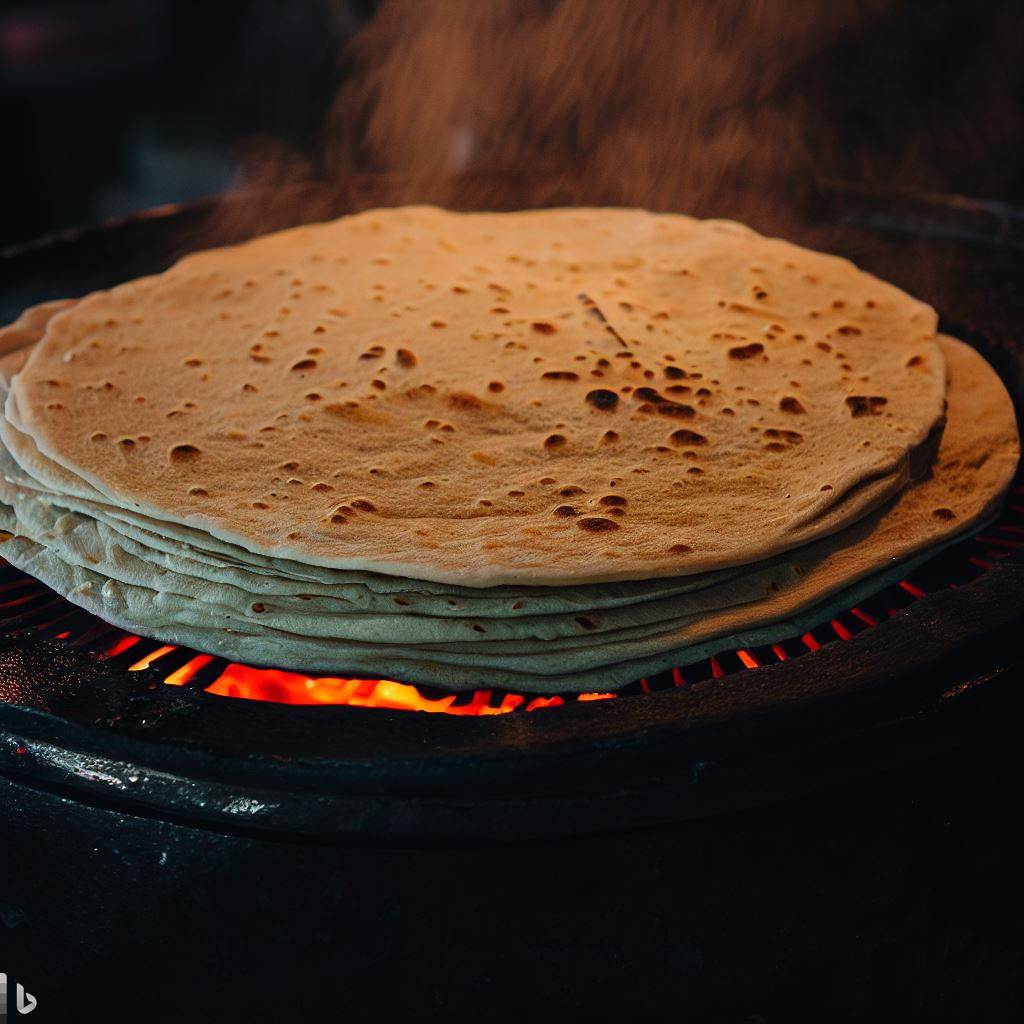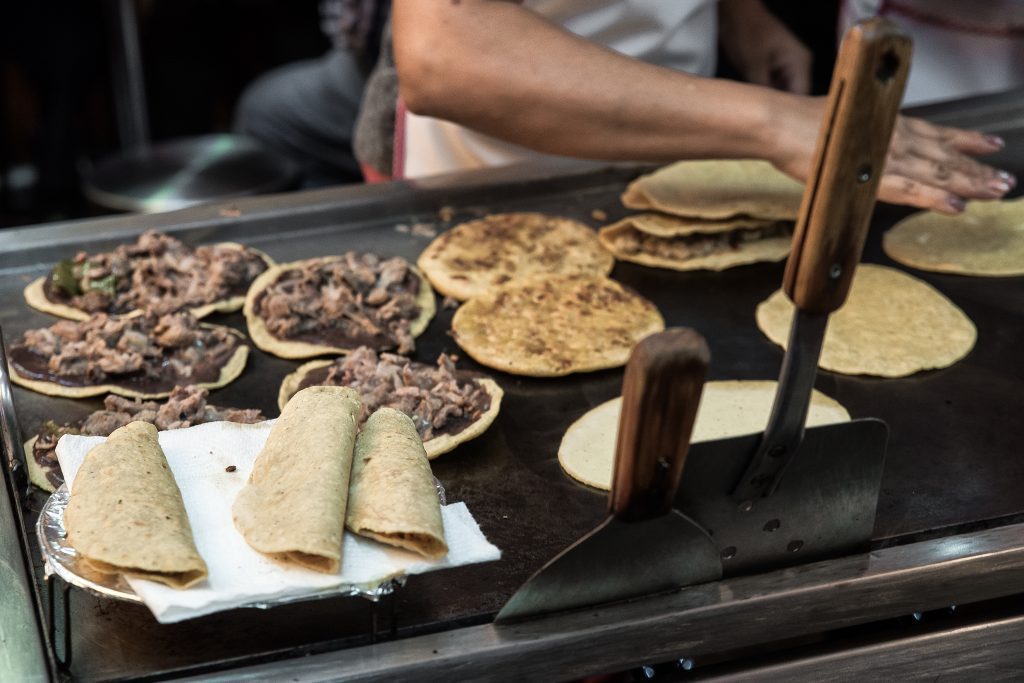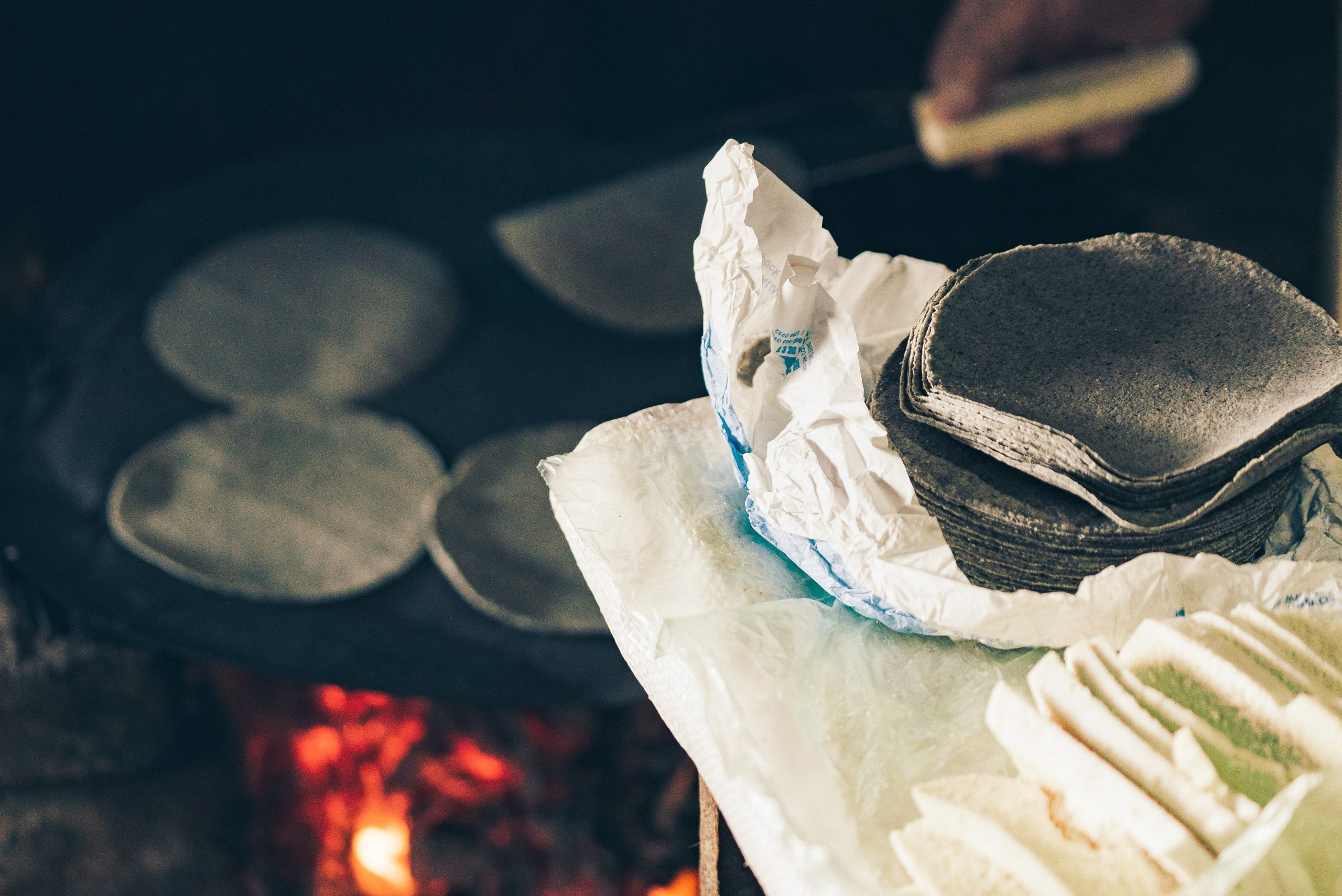Exploring the Culinary Canvas: A Guide to Different Types of Comals
Growing up in Los Angeles was a whirlwind of vibrant experiences that shaped my love for diverse cultures and culinary adventures. One of the fondest memories I have is of my mom and neighbors gathering around a comal, a traditional Mexican griddle, to cook mouthwatering dishes that would leave a lasting impression on my taste buds.
Thank you for reading this post, don't forget to subscribe!
The comal, a circular metal plate placed atop an open flame, became a central part of our kitchen, infusing our home with the tantalizing aroma of sizzling tortillas, roasted peppers, and savory meats. The comal’s humble presence felt like a conduit to our Mexican heritage, bridging the gap between our home in LA and the rich flavors of the motherland.
As I grew older, my passion for food led me on unforgettable journeys to Mexico, where I had the opportunity to witness authentic comals in action. Exploring bustling markets, I marveled at the array of comals on display, each one telling a story of generations past. The Mexicans’ unwavering dedication to their culinary traditions was evident as they skillfully manipulated the comal, expertly toasting tortillas and creating delectable quesadillas filled with gooey cheese or succulent meats.
The comal seemed to hold within it the secrets of generations, a sacred tool that symbolized the heart and soul of Mexican cuisine. From street vendors to family-run restaurants, the comal was an ever-present symbol of warmth and communal gatherings, drawing people together to celebrate the joy of food.
In the world of culinary delights, every culture has its unique way of creating mouthwatering dishes that capture the essence of tradition and flavor. One such essential tool that plays a pivotal role in various cuisines is the comal. A comal is more than just a cooking surface; it’s a vessel that imparts depth and authenticity to dishes. In this culinary journey, we will delve into the diverse world of different types of comals, exploring their types and the cultures that swear by them.
The Traditional Comal: A Time-Honored Treasure
The traditional comal, often referred to as a “griddle,” is a flat, round or oval cooking surface that has been a staple in many kitchens for generations. Typically made from clay, cast iron, or sheet metal, it’s renowned for its ability to cook foods evenly while infusing them with a distinct smoky flavor. This type of comal is a cherished possession in Mexican households, where it’s used to prepare tortillas, roast chilies, and cook various meats. The comal’s seasoned surface adds character to every dish it touches, making it a vital tool in preserving culinary legacies.

Tava: Where East Meets West
Traveling eastward, we encounter a cousin of the comal known as the tava. This concave griddle is intrinsic to Indian and Pakistani kitchens, playing a fundamental role in crafting beloved dishes like roti, naan, and paratha. Crafted from materials such as iron, aluminum, or even non-stick coatings, the tava’s unique shape allows for efficient heat distribution and easy flipping of flatbreads. Beyond its utilitarian purpose, the tava is emblematic of the cultural importance of bread in these regions – a symbol of sustenance and community.
Injera Mitad: The Ethiopian Essential
Venturing into Ethiopian cuisine, we encounter the injera mitad, a specialized comal designed explicitly for making injera – a sourdough flatbread that serves as both a staple food and an eating utensil. Crafted from clay or metal, the injera mitad has a larger diameter than the traditional comal, enabling the preparation of large, thin injera discs. The unique fermentation process of injera demands a specific type of cooking surface, and the injera mitad’s porous texture is perfect for creating the signature bubbly appearance of this beloved bread.
The Saj: Crafting Levantine Delights
The Levant region boasts its own version of the comal – the saj. This domed griddle is integral to preparing Levantine flatbreads like markook and shrak. Made from cast iron or sheet metal, the saj’s distinctive shape aids in creating thin, elastic bread that is perfect for wrapping around delectable fillings. The saj is not only a cooking utensil but a social catalyst, as families and friends gather around it to share meals and stories.
Beyond Borders: Global Influences and Culinary Connections
As our culinary journey comes full circle, it’s evident that while comals may vary in shape, size, and material, they all share a common thread – they bring people together through food. These cooking surfaces transcend geographical boundaries, linking cultures through the simple act of preparing meals. From the sizzle of tortillas on a Mexican comal to the aroma of Indian breads gracing a tava, each type of comal is a testament to the art of cooking and the love of sharing flavorful experiences.
Unveiling the Role of Comals in Mexican Cuisine
In the heart of Mexican cuisine lies a timeless tradition that has transcended generations—the art of making tortillas. A cornerstone of Mexican gastronomy, tortillas are not merely a staple but a cultural emblem, embodying the essence of family, heritage, and community. Central to this culinary marvel is the revered comal, a versatile cooking tool that has been the linchpin of tortilla production for centuries. In this exploration, we delve into the intricate relationship between the Mexican comal and the iconic tortilla, uncovering the secrets and significance that bind them.
The Comal: A Catalyst of Flavor
The comal, often referred to as “comal para tortillas mexicano,” is a flat, circular griddle made from various materials, including clay, cast iron, and more contemporary materials like steel. Its inception predates the colonial era, tracing back to the Mesoamerican civilizations that have laid the foundation of Mexican culture. This unassuming piece of cookware has an unparalleled influence on the flavors and textures that define traditional Mexican dishes.

One of the remarkable aspects of using a comal for tortilla preparation is the even distribution of heat it provides. The surface of the comal heats up uniformly, allowing the masa—the dough used for making tortillas—to cook evenly and develop a delightful golden hue. This controlled heat ensures that the tortillas maintain their authenticity, providing a canvas for the rich tapestry of flavors that Mexican cuisine is celebrated for.
Craftsmanship and Culture
Crafting a comal is an art form in itself. Many artisans dedicate their lives to honing the skill of creating these essential cooking instruments. The process often involves molding clay or shaping metal with precision, resulting in a tool that not only cooks but also encapsulates the spirit of Mexican culinary heritage. The “comal mexicano para tortillas” is more than a utensil; it’s a tangible link to the past—a bridge that connects modern kitchens with ancestral traditions.
Diverse Varieties of Comals
Just as Mexican cuisine boasts a vibrant tapestry of flavors, the comals themselves come in various shapes and sizes, each catering to specific culinary needs. The traditional clay comal, known for its earthy aroma, imparts a distinct smokiness to tortillas, enriching the gastronomic experience. Cast iron comals are revered for their durability and ability to retain heat, making them a staple in both traditional and contemporary kitchens. Additionally, modern stainless-steel comals offer convenience without compromising on authenticity, reflecting the evolving landscape of Mexican cuisine.

Preserving Tradition in a Modern Age
In an era characterized by rapid technological advancement, the continued use of comals for tortilla preparation is a testament to the resilience of tradition. As convenience-driven alternatives vie for attention, the cultural significance of the comal remains unwavering. Families across Mexico, and indeed the world, gather around these simple yet profound tools, kneading masa and crafting tortillas that transcend time. The “comal para tortillas mexicano” becomes a conduit for connection, a shared experience that binds generations and fosters a sense of unity.
The Ritual of Tortilla Making
The process of making tortillas on a comal is steeped in ritual. The act of patting and shaping the masa by hand, followed by its gentle placement onto the heated surface of the comal, is a dance of culinary finesse. The sizzle as the dough touches the comal is a symphony of anticipation, foretelling the flavors that are about to unfold. The tortillas are flipped with grace, each side kissed by the comal’s warmth until they are perfectly cooked—a testimony to the cook’s expertise.
Beyond Making Tortillas: Culinary Versatility
While the comal’s role in tortilla-making is undisputed, its influence extends beyond this staple. The comal’s flat surface and even heat distribution make it ideal for cooking an array of dishes, from quesadillas and sopes to roasted vegetables and meats. This versatility encapsulates the essence of Mexican cuisine itself—dynamic, adaptable, and deeply connected to its roots.
Mastering the Art of Comal Cooking
Using a comal is a versatile experience, catering to various cooking methods. You can harken back to ancient Mesoamerican times by placing the comal over an open fire, lending a smoky depth to your creations. Alternatively, opt for the stovetop approach. Let the comal heat evenly on low-medium heat before diving into culinary delights.
Here’s how a comal can enhance your cooking prowess:
- Toasting Spices & Chillies: Achieve the perfect toast on dried chilis in just a couple of minutes per side. Soak them in hot water and blend for a flavorful salsa base. Fresh peppers can also be charred to perfection.
- Searing Meat: Whether it’s a classic carne asada or a succulent NY strip steak, the comal handles the heat like a pro.
- Cooking Tortillas: Crafting tortillas is a breeze. Pressed masa balls only need about 30 seconds per side on the comal. Reheating store-bought corn tortillas? A quick water dunk followed by the comal treatment works wonders.
- Creating Quesadillas: Keep it simple with quick and cheesy quesadillas. The comal’s even heat ensures perfection.
Conclusion
In the world of gastronomy, the comal serves as a silent yet impactful participant—an instrument that shapes the culinary narrative of a nation. The “comal mexicano para tortillas” is more than a tool; it’s a guardian of tradition, a keeper of flavors, and a vessel of unity. As the fragrance of tortillas wafts through Mexican homes, it carries with it the stories of generations past and the promise of generations to come. So, the next time you savor the taste of an authentic Mexican tortilla, remember the comal that made it possible—the unsung hero of a timeless culinary masterpiece.
F.A.Q. – Comal Pan Used in Mexican Cooking
Question 1. What is a comal and what is it used for in Mexican cooking?
A comal is a heavy, flat pan made of cast iron that is extensively used in Mexican cuisine. It is primarily used for grilling carne asada (red meats) and vegetables, as well as for cooking tortillas. The comal’s unique rough surface adds flavor to the food, setting it apart from non-stick or stainless steel pans.
Question 2. Can a comal be used on different cooking surfaces?
Yes, a comal is highly versatile and can be used on various cooking surfaces, including stovetops, ovens, and even grills. However, caution is advised due to its high heat retention. It’s important to handle it with kitchen rags or potholders when moving it during the cooking process.
Question 3. How should I prepare a new comal before using it?
Properly seasoning a new comal is essential to enhance its longevity and prevent rust. Begin by washing the pan with warm soapy water and drying it thoroughly. Then, lightly coat the pan with vegetable oil or shortening to prevent rust spots. Place the comal in a preheated oven (at least 350°F) for an hour. After cooling, wipe off excess residue, reapply oil, and heat it for another hour. Let it cool in the oven overnight. Your comal will now be seasoned and ready to use.
Question 4. How do I clean and maintain a comal?
Never put a comal in the dishwasher. After cooking, wipe down the surface with a rag or sponge. Use a spatula to remove excess food. If necessary, wash it in warm soapy water, ensuring immediate and thorough drying to prevent rust. Regularly rubbing oil on the surface keeps it well-seasoned and imparts flavor to your food. It’s important to allow the comal to cool gradually; avoid exposing a hot comal to cold temperatures. If cracks develop, discard the pan. For rust removal, scrub with steel wool, rinse, and repeat seasoning instructions.
Question 5. Where can I purchase a comal?
You can find a variety of comals at Latin markets in your local area. They generally stock several types, shapes, and sizes of comals. If you’re having trouble finding one locally, you can always explore online options to purchase a comal that suits your needs and preferences.
With its historical roots deeply embedded in Mexican culinary culture, the comal serves as an integral tool that imparts unique flavors and experiences to traditional dishes. Whether you’re grilling meats, cooking tortillas, or experimenting with various culinary creations, the comal stands as a versatile and timeless companion in the art of Mexican cooking. Proper care and understanding of this beloved utensil ensure that you can enjoy its benefits for generations to come.

